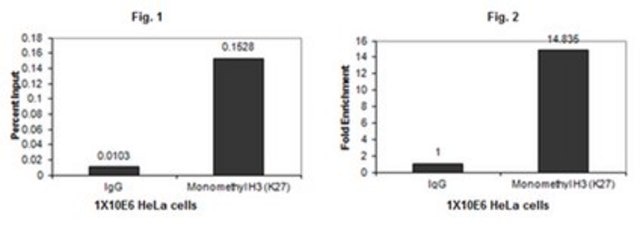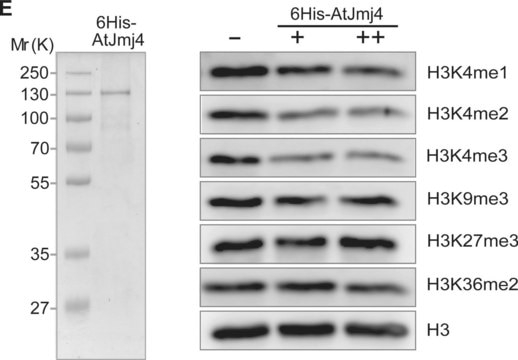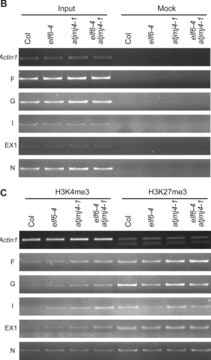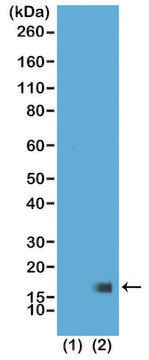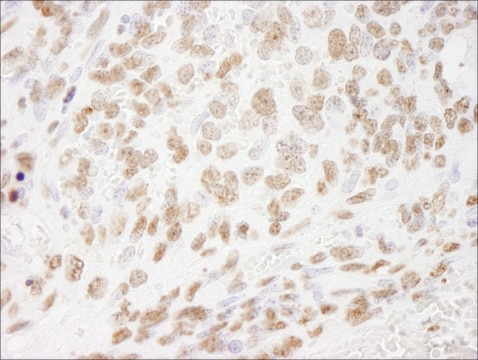07-448
Anti-monomethyl-Histone H3 (Lys27) Antibody
Upstate®, from rabbit
Synonym(s):
H3K27me1, Histone H3 (mono methyl K27), H3 histone family, member T, histone 3, H3, histone cluster 3, H3, H3K27me1
About This Item
Recommended Products
biological source
rabbit
Quality Level
antibody form
purified antibody
antibody product type
primary antibodies
clone
polyclonal
species reactivity
human, vertebrates
manufacturer/tradename
Upstate®
technique(s)
ChIP: suitable (ChIP-seq)
dot blot: suitable
immunocytochemistry: suitable
western blot: suitable
isotype
IgG
NCBI accession no.
UniProt accession no.
shipped in
wet ice
target post-translational modification
monomethylation (Lys27)
Gene Information
human ... HIST1H3F(8968)
General description
Specificity
Immunogen
Application
Reported by an independent laboratory (Kohlmaier, A., 2004; Perez-Burgos, L., 2004; Peters, A. H., 2003).
Epigenetics & Nuclear Function
Histones
Quality
Western Blot Analysis:
0.1-0.2 μg/mL had detected monomethylated histone H3 in acid extracted proteins from HeLa cells.
Target description
Physical form
Storage and Stability
Analysis Note
HeLa acid extract
Other Notes
Legal Information
Disclaimer
Not finding the right product?
Try our Product Selector Tool.
wgk_germany
WGK 1
flash_point_f
Not applicable
flash_point_c
Not applicable
Certificates of Analysis (COA)
Search for Certificates of Analysis (COA) by entering the products Lot/Batch Number. Lot and Batch Numbers can be found on a product’s label following the words ‘Lot’ or ‘Batch’.
Already Own This Product?
Find documentation for the products that you have recently purchased in the Document Library.
Our team of scientists has experience in all areas of research including Life Science, Material Science, Chemical Synthesis, Chromatography, Analytical and many others.
Contact Technical Service



